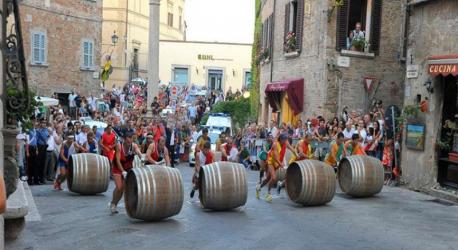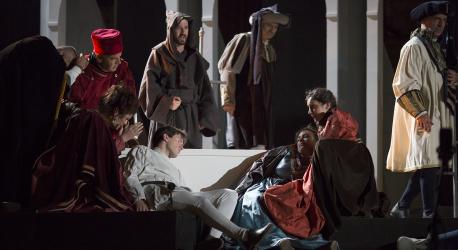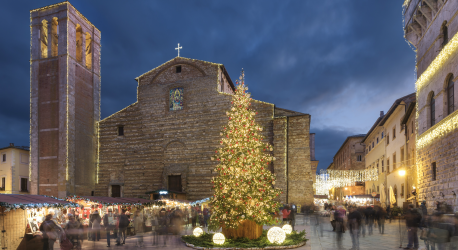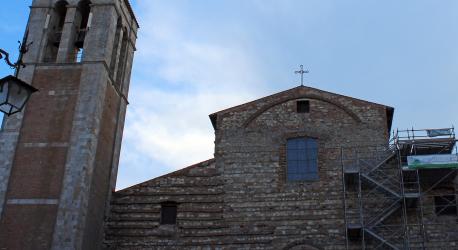With an ancient and long history, Montepulciano is one of the most characteristic towns of Siena's Tuscany, located between the Val di Chiana and the Val d’Orcia. Built around the sixth century BC. C, at the moment of maximum development of the Etruscan civilization, Montepulciano peeps out among the green hills of the Tuscan hinterland in a dominant position with respect to the Val di Chiana so that its name originates from the Etruscan "purth", a term that indicates the role of the commander and of the leader.
Founded by the ancient Etruscan lucumone (king) of Chiusi, Montepulciano still retains all the characteristics of the most evocative and picturesque medieval villages of the area: an "S" -shaped town enclosed within three circles of walls, all built towards the fourteenth century.
Free and rich by vocation, Montepulciano has faced, over the centuries, the repeated Sienese incursions, allying itself now with Perugia, now with Orvieto, but also willingly accepting the support of Florence with which the Poliziani steadily allied themselves in 1300. The period between the two following centuries can be considered the golden age of Montepulciano. Crossed by a certain political stability, the town made its way as a center of cultural prestige and a place of flourishing of the arts. For this reason, the fifteenth century is remembered, in the history of the village, as the era of the humanist Bartolomeo Aragazzi, of the poet Angelo Poliziano and of Cardinal Marcello Cervini who sat on the papal throne for only 28 days with the name of Marcello II. Passed from the province of Arezzo to the Sienese jurisdiction during the unification of Italy, Montepulciano is today one of the main agricultural markets of the area. Its famous wine tradition, culminating in the production of Vino Nobile di Montepulciano Docg, and its architectural beauty, make it one of the most visited places, not only in the Tuscan countryside, but also in all of central Italy.

Conosciuto fin dal XIV secolo, il Bravìo delle Botti è la sfida che ogni anno getta scompiglio tra le otto contrade di Montepulciano. L’ultima domenica di agosto, in onore della festa del santo patrono S. Giovanni Decollato, le contrade Cagnano, Collazzi, Gracciano, Le Coste, Poggiolo, San Donato, Talosa e Voltaia diventano infatti protagoniste di una corsa davvero pittoresca che si svolge lungo le vie principali della città: da Colonna del Marzocco fino a Piazza Grande, due uomini detti "spingitori" spingono una botte del peso di 80 kg per un percorso lungo circa 1700 metri.

A partire dal 1939 il mese di agosto è sempre stato scandito dal Bruscello Poliziano, una forma di teatro popolare e contadino, tipicamente toscano, recitato e cantato da attori non professionisti. Nelle calde sere estive, in Piazza Grande, il sagrato della Cattedrale si anima di rappresentazioni, talvolta epiche, talvolta farsesche, create da immaginazioni popolari o da fatti realmente accaduti. Il tema varia di anno in anno tanto che soggetti, testi e sceneggiature sempre nuove mettono a dura prova la creativa spontaneità dei Bruscellanti, una compagnia che pratica questo genere per amor di tradizione e diletto.

Partire alla scoperta del Villaggio di Natale di Montepulciano è un'esperienza davvero unica: un vero e proprio viaggio fra le tradizioni dell’Avvento da vivere immersi in un’ambientazione da favola. All’interno del villaggio è infatti possibile passeggiare tra le bancherelle di un caratteristico mercatino allestito in casette di legno per poi tuffarsi in un’emozionante visita del Castello di Babbo Natale, ricco di sorprese per grandi e piccini.

The Cathedral of Santa Maria Assunta is the main place of Catholic worship in Montepulciano, solemnly consecrated in 1712 by Bishop Francesco Maria Arrighi. Built between 1586 and 1680 on a project from Orvieto Ippolito Scalza, the building stands in the place where the ancient parish church of Santa Maria was located. The vast spaces of the temple are now adorned with a large number of works from the ancient parish church and from other Polizian churches, such as the monumental "Triptych of the Assumption", painted by Taddeo di Bartolo and the walled fragments of the fifteenth-century funeral monument of Bartolomeo Aragazzi, made by Michelozzo in Carrara marble.

A building of military origin erected in 1261 by the Republic of Siena, the Medici Fortress of Montepulciano has been destroyed and rebuilt several times due to the disputes between the Sienese and the Florentines up to the last reconstruction attributed to the architect Antonio da Sangallo the Elder. Currently used to host the annual handicraft exhibition, the Fortress is now home to the American Kennesaw State University, which has made it a place of aggregation, study and an educational-training laboratory always looking for new ideas.

Located in via del Teatro, the building of the Poliziano Theater links its origins to the events of the Accademia degli Intrigati. Conceived by the architect Giuseppe Valentini from Prato, the theater has been completed in 1769, using the premises of Monte Pio under the city's cathedral, and was later renovated by the Sienese architect Augusto Corbi. With the exception of a few parentheses relating to the last post-war period, the Teatro Poliziano has always hosted a rich theatrical and lyrical activity, which, for some decades, has also continued in the context of the summer posters of the Cantiere Internazionale d'Arte and in the winter ones of the Inter-municipal Association of Valdichiana Senese.






